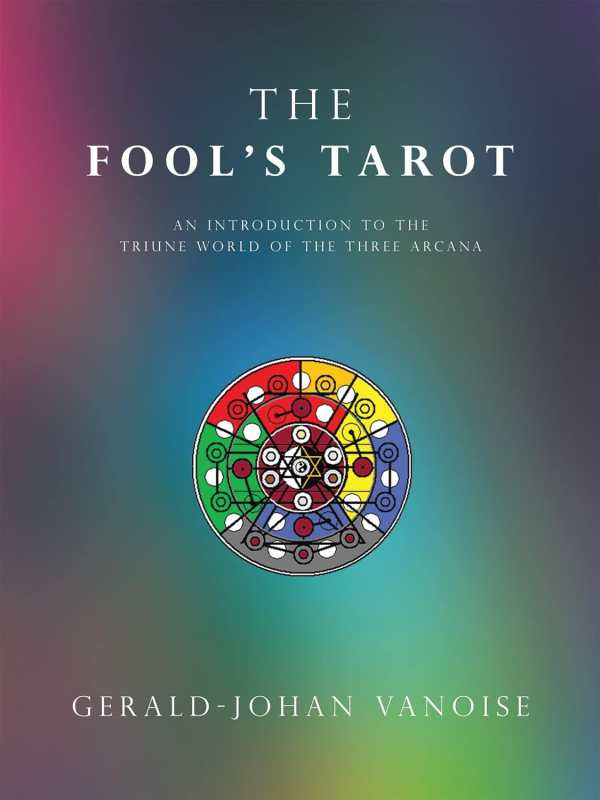The Fool’s Tarot
An Introduction to the Triune World of the Three Arcana
The Fool’s Tarot takes a visionary, intuitive approach to reading tarot cards that can enlarge the intuitive capacities of both the reader and the querent.
Gerald-Johan Vanoise introduces a new, intuitive method of tarot interpretation that goes beyond working with images and associations to reach expanded levels of consciousness.
The stated thesis of this book, the first volume in a trilogy, is that working with the tarot is a quest for understanding that cannot be arrived at through images alone. Instead of treating the cards in the tarot deck as “good” or “bad,” it suggests seeing them as neutral. And rather than making the goal of a reading a moral obligation to change the “negative” news delivered by the “bad” cards to something more positive, it sees each card as carrying information about a facet of a life situation, an event, or the stance of the querent (the one seeking answers from the cards) in relation to it. This, according to the text, necessitates an approach to card reading that, rather than operating by mere image-related association, demands recognition of patterns, life cycles, and openness to the operation of intuition.
The book is organized to show the logical progression of its thought through the human life cycle. In a reading, each card drawn shows an area or developmental step in the cycle that needs focused attention. Vanoise’s system of interpretation places the Fool, the first card in a traditional tarot deck, at center stage, replacing the Magician, traditionally associated with the card reader. And it is the attitude represented by the Fool—one of new beginnings, unknowing, intuition, and openness—that the book suggests be adopted when working with the tarot. The new system’s replacement of recognizable images, ancient and contemporary, with unusual glyphs or pictograms may tear those who are accustomed to interpreting familiar images out of their comfort zone.
In the end, the book’s arguments for a more intuitive, less tradition-bound and arbitrary method of interpretation are convincing. This method integrates the reader, querent, and situation into the whole of the life cycle, going through the cards one at a time with the flexible, open attitude of the Fool and assuming that each card represents one aspect or phase in a learning process. As there are no “bad” or “good” cards in this system, no one is a victim, but all are learners.
However, the book’s usefulness is somewhat limited in other respects: the definitions of its terms are not always given at point of use, there is no glossary, and references are scarce. For example, a statement that this method was “created to initiate the serious Reader [of cards] into the essential kernel of the Great Game” remains vague without an explanation of “Great Game.” In similar situations, the text is prone to suggesting that later chapters or forthcoming volumes will elaborate upon subjects that it leaves incomplete or unclear.
Further, the book’s intriguing glyphs and complex mandalas also have the potential to be confounding. They demand prior familiarity with the tarot and at least an interest in psychology, astrology, philosophy, and the esoteric arts, without which this is heavy and obscure reading. However, the method appears to open up a world of interpretation centered in and reliant upon the development of the card reader into a more aware, conscious, intuitive being—and to invite the querent to become one as well.
The Fool’s Tarot takes a visionary, intuitive approach to reading tarot cards that can enlarge the intuitive capacities of both the reader and the querent.
Reviewed by
Kristine Morris
Disclosure: This article is not an endorsement, but a review. The publisher of this book provided free copies of the book and paid a small fee to have their book reviewed by a professional reviewer. Foreword Reviews and Clarion Reviews make no guarantee that the publisher will receive a positive review. Foreword Magazine, Inc. is disclosing this in accordance with the Federal Trade Commission’s 16 CFR, Part 255.

